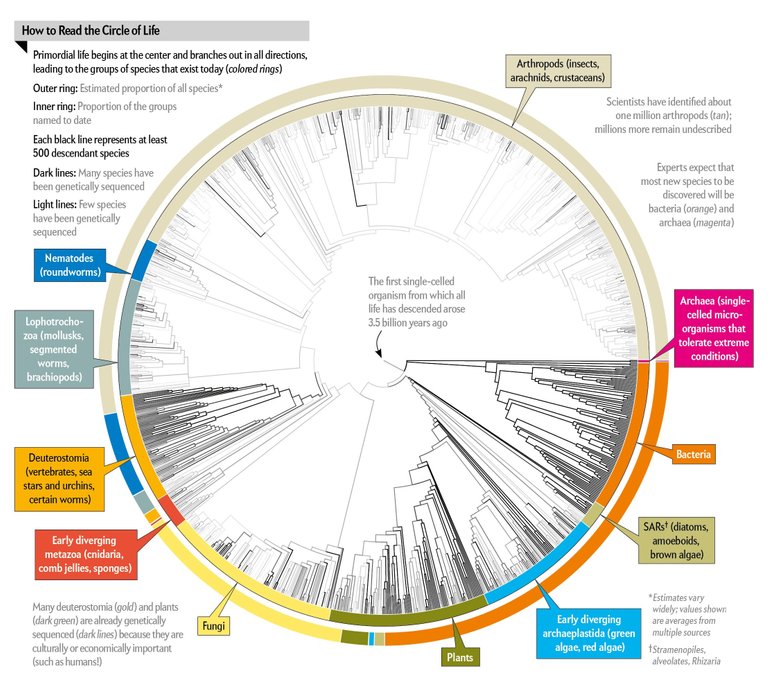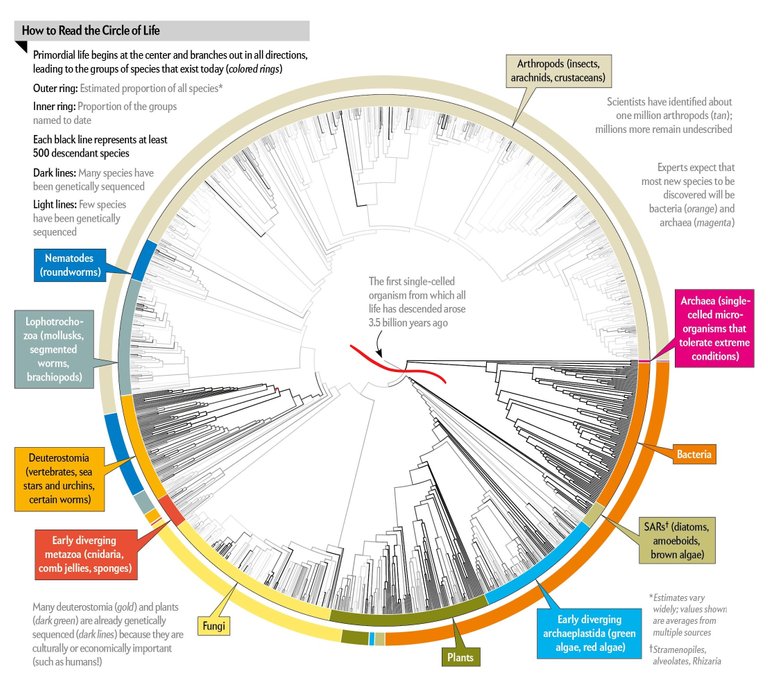The cell
Version française : Steemit | Busy
I talked about cell many times in previous chronicles, we said that each cell contains the same genetic information (the famous coil of DNA), that bacteria have only one cell and that can divide itself, consequently cells can divide itself.

So, cells measure between 0.5 and 5µm in bacteria, but in evolved species, they can reach 100µm (there also are giant cells, that I will talk about in quirks in Nature).
Today I will introduce an important concept: prokaryotes and eukaryotes.

Don’t panic, is not complicated, first define what is in a cell and why:
The main component of the cell is the membrane, it allows to make a bound between outdoor environment and the inside of the cell. Before explaining you, what compose it I need to explain you the molecules, or how is constituted the living.
On this membrane, there may is another layer (called cell wall) to give more protection.
This membrane is full of liquid, it’s a bit like a background matrix, which is called the cytoplasm. Essentially composed of water, it offers an adequate environment for other components.
Inside this “water bubble” (that’s it finally), there is, of course, DNA in the coil shape.
Then there are ribosomes, it’s the reader and executor of the genetic code (we will see this later).
That is common between all cells in living world, now I will explain you the two terms above.
Look, another tree of life representation, this one is very well detailed.

Source : http://ssaft.com/Blog/dotclear/?post/2017/01/06/Le-Top-Ten-des-especes-Strange-and-Funky-de-2016
Watch out, go away a little.

YAAAAA!!

Yes, I just cut the tree into two parts, I separated Archaea and Bacteria (pink and orange) from other organisms of the tree. In fact, I separated prokaryotes and eukaryotes organisms.
Bacteria and Archaea are prokaryotes organisms, you can summarize that by fact that they are bad boys who don’t clean their room compared to their eukaryotes cousins who have always a clean room.
Indeed, eukaryotes organisms have a nucleus inside their cells allow them to store and protect DNA, instead of having a DNA which moving in the cell, like prokaryotes organisms.
Let’s see differences between these two:
The DNA:
I said that the DNA of an individual is cut into chromosomes, yes this is DNA of eukaryotes. In addition to having a free DNA in the cell, prokaryotes have a circular DNA, it means that our coil doesn’t have extremities. And it isn’t cut into chromosomes so, we say that they have one chromosome, this chromosome can be accompanied by a plasmid which is a small circular piece of DNA.
The nucleus:
Non-existent in prokaryotes, it allows separating nucleus content (DNA and his tools) from the cytoplasm, a bit like the membrane with the outdoor environment. For that, the nucleus has a nuclear membrane (obviously) composed of two layers (it’s a good protection!). This nucleus has nuclear pores (small hole) to have an exchange between the two compartments.
The division:
The division of prokaryotes organisms is a simple division, a father organism becomes two child organisms. While in eukaryotes organisms the division is more elaborated (we will see that later).
The cell content:
You would have understood it, in prokaryotes, there are not many things; DNA in circular shape and ribosomes moving in the cytoplasm. While in eukaryotes there are, besides the nucleus, many accessories called organelles (ribosomes are organelles).
- Endoplasmic reticulum: production and transport of molecules.
- Mitochondria: energy production through respiration
- Chloroplasts: energy production through sun
- Vacuoles: the bin
- Golgi apparatus: finishing of molecules
- Centrosomes: the coordinator
- Peroxisomes and lysosomes: the cleaners

There are so many things inside!
Don’t worry, you have just to know that all these, work in coordination, where each one has a role like in a company. But we will discuss of that later.
Day quirk: the cyanobacteria
They are prokaryotes organisms which have the ability to use solar energy, however, they don’t have chloroplasts like eukaryotes but have thylakoids. So, their cells contain also thylakoids! Appearing 3.5 billion of years ago, they would be the firsts organisms which produce oxygen on Earth through the famous photosynthesis.
Would be them at the beginning of plants on Earth?
References :
https://fr.wikipedia.org/wiki/Cellule_(biologie)
https://fr.wikipedia.org/wiki/Prokaryota#Plan_d'organisation
https://fr.wikipedia.org/wiki/Noyau_(biologie)#Contenu_et_structure_du_noyau
https://fr.wikipedia.org/wiki/Cyanobacteria#Structure
What this Dr.Plantes want me?

#01_Where are we? What time is it?
#02_The bacteria
#03_The DNA
#04_The evolution